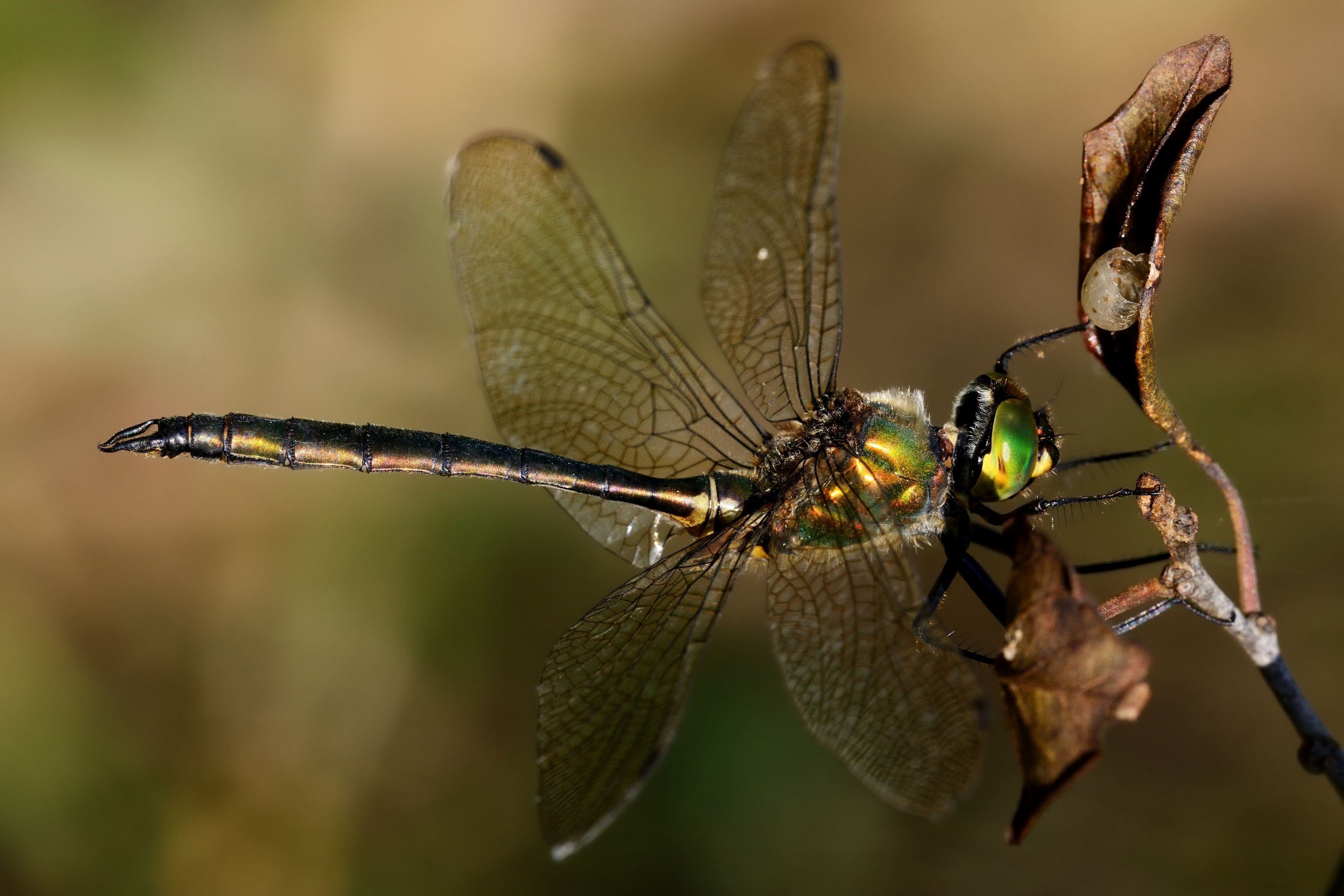Hine's emerald
(Somatochlora hineana)

Description
The Hine’s emerald (Somatochlora hineana) is an endangered dragonfly species found in the United States and Canada. Populations exist in Illinois, Michigan, Missouri, Ontario, and Wisconsin. Larvae are found in shallow, flowing water in fens and marshes, and often use crayfish burrows. Major threats to the species include habitat loss and alteration, and the species is legally protected in both the United States and Canada. The Hine's emerald's appearance varies across its lifetime. During the larval stage, nymphs possess no features that distinguish them from those of other dragonfly species. A mature nymph measures roughly 0.9 inches in length. Several characteristics distinguish adult Hine's emeralds from other dragonfly species. An adult Hine's emerald has a distinctive dark-green thorax with two yellow lateral stripes. Hine's emeralds also have uniquely shaped male and female reproductive structures. A Hine's emerald's eyes are brown during the first 1–3 days of adulthood. After the third day, the Hine's emerald's eyes take on an emerald green color. Their wings remain clear with amber coloring at the base until the ends of their lives, at which point they become smoky in color. The average mature Hine's emerald measures 2.5 inches in length and has a wingspan of 3.5 inches. On average, female dragonflies are slightly longer than males. For a further visual representation of adults, refer to figure 2. During their lifespans, Hine's emeralds progress through the egg stage, larval stage, and adult stage. Both the egg and larval stages are aquatic. Hine's emeralds spend the majority of this lifespans in the larval stage. This stage lasts 2–4 years. The specific length of this stage varies with food supply, water depth, and temperature. While in this stage, Hine's emerald nymphs live within streamlets and mature by undergoing a series of molts. A mature larvae transitions into the adult stage by climbing up onto a cattail and completing a final molt. During this molt, the nymph’s skin splits longitudinally along its body. The adult then sheds this dead skin and emerges into the wild. Nymphs typically emerge into the wild during June and July. Male and female nymphs appear to progress into the adult stage in equal proportions. Hine's emeralds occupy wetland, pond and pool, wet meadow, forest, and marsh habitats.
Taxonomic tree:







